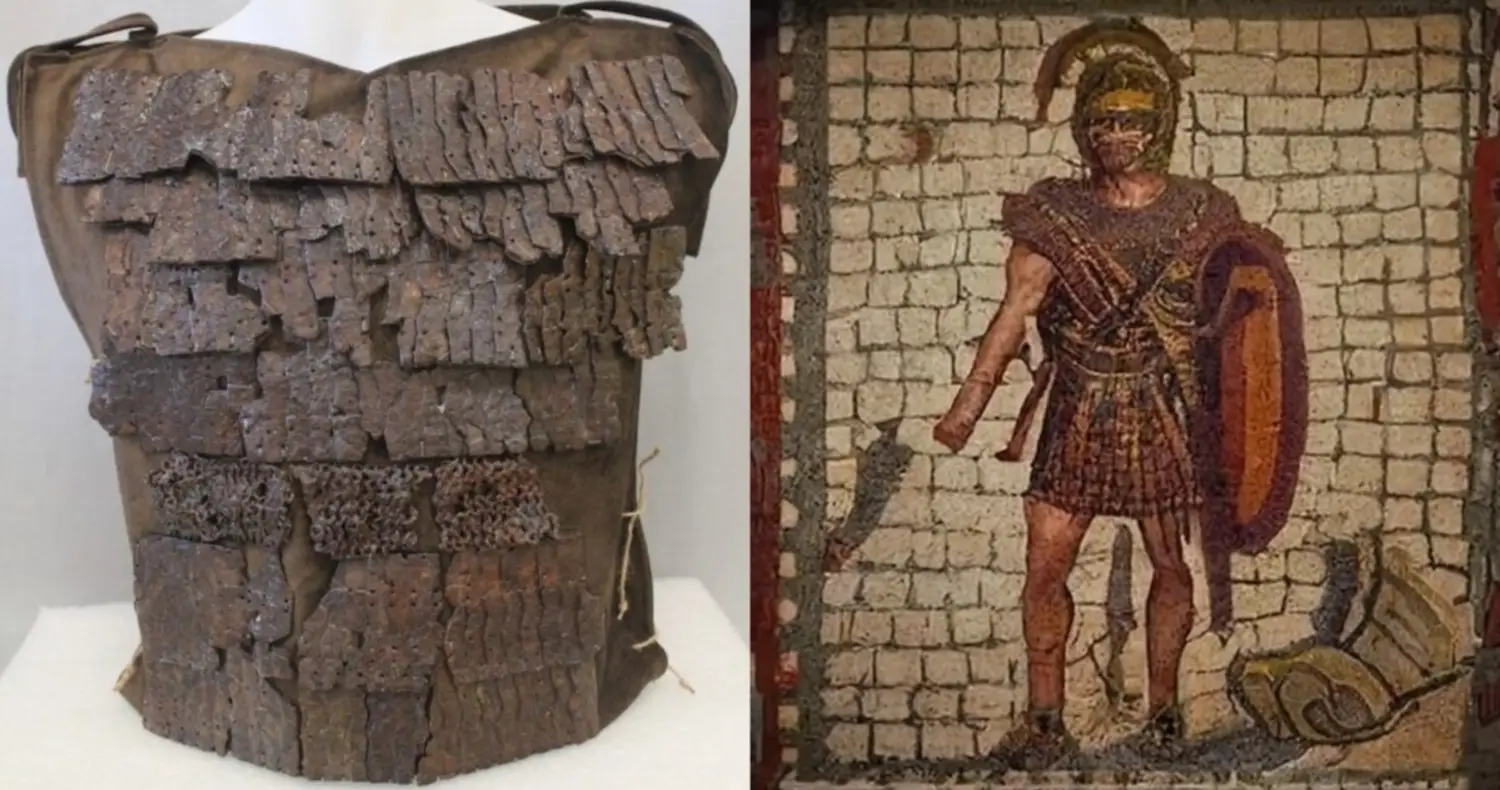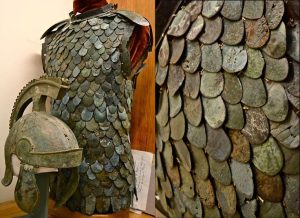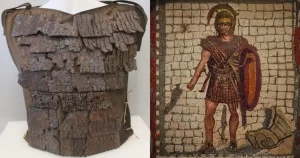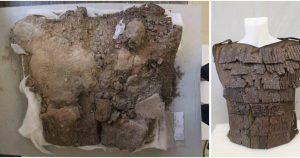“Roman Lorica Squamata Armor”

This image displays an ancient Roman armor set, specifically a type known as lorica squamata, remarkable for its scaly, reptilian appearance that evokes the natural armor of creatures like crocodiles or lizards.
On the left side of the image, we see a full frontal view of the armor, revealing its overall silhouette and construction. The armor consists of countless small metal scales carefully riveted or sewn onto a backing of fabric or leather, creating a flexible yet protective shell that conforms to the wearer’s body. This engineering allowed Roman soldiers to move relatively freely while still enjoying substantial protection against cuts, thrusts, and missile weapons.

The right side of the image provides a detailed close-up of these individual scales. Each scale overlaps its neighbors like shingles on a roof, forming a dense, articulated surface. The textured pattern is not merely decorative — it was designed to deflect blows, reduce penetration by edged weapons, and distribute impact forces more evenly. This detail highlights the Roman army’s highly developed metallurgical skill and understanding of practical battlefield needs.
Lorica squamata was widely used across the Roman world, often by auxiliary troops, cavalry, or officers who wanted armor that balanced defense with flexibility. It was particularly valued for its versatility, as it could be tailored to fit different body shapes and was relatively light compared to solid plate armor.

Beyond its practical use, the scaly design also carried powerful symbolic meaning. By echoing the appearance of dangerous reptiles, the armor projected an image of ferocity, strength, and intimidation. Roman military culture often leveraged such imagery to strike fear into enemies and boost the morale of their own soldiers. It signified not just physical protection but psychological dominance on the battlefield.

This particular armor set is now preserved and displayed in a museum setting. Visitors can admire the ingenuity, attention to detail, and aesthetic sensibility that went into its creation nearly two millennia ago. It stands as a testament to the sophistication of Roman military technology and the empire’s capacity to integrate practicality with symbolic power. Through such artifacts, we gain a vivid window into the daily realities, cultural values, and martial traditions of ancient Rome, appreciating both the artistry and strategic thinking that underpinned its legendary legions.